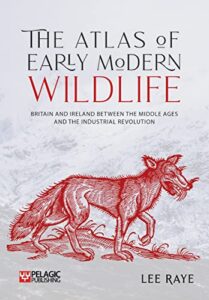 As the songwriter Joni Mitchell so eloquently wrote in her now iconic Big Yellow Taxi, “Don’t it always seem to go / That you don’t know what you’ve got / Till it’s gone,” what is lost can too often only be perceived as important once it is too late. In few fields of scientific study is this more central to all activity than wildlife conservation. In regard to population studies, it simply isn’t possible to assess whether a species is increasing, declining, or remaining at a constant level of population of range if historical records do not provide enough information to establish a reasonable baseline against which to make such determinations. Fortunately scholars such as Dr. Lee Raye are making investigations into just this type of historical information.
As the songwriter Joni Mitchell so eloquently wrote in her now iconic Big Yellow Taxi, “Don’t it always seem to go / That you don’t know what you’ve got / Till it’s gone,” what is lost can too often only be perceived as important once it is too late. In few fields of scientific study is this more central to all activity than wildlife conservation. In regard to population studies, it simply isn’t possible to assess whether a species is increasing, declining, or remaining at a constant level of population of range if historical records do not provide enough information to establish a reasonable baseline against which to make such determinations. Fortunately scholars such as Dr. Lee Raye are making investigations into just this type of historical information.
In Dr. Raye’s recently published book The Atlas of Early Modern Wildlife; Britain and Ireland between the Middle Ages and the Industrial Revolution we are presented with a most remarkable catalouge of the species that were documented as having been living in these islands before modern population studies of them began. More than a simple bestiary, this new atlas draws upon over 10,000 pieces of information recorded in English, Irish, Scots, Scottish Gaelic, Welsh, Cornish and Norn about over 150 species of mammals, birds, fishes, amphibians, reptiles, molluscs, crustaceans, and echinoderms that are documented as having been in the geographic area from a period approximately five hundred to two hundred fifty years ago, or noted during by observers during that period as significantly not present (e.g., a comment indicating that a species that was known to have been in a particular location is no longer to be found there).
In my reading thus far, I have been both impressed and surprised by the breadth of species Dr. Raye has been able to find observations for that justify their inclusion in the book. Species as Pine Marten and Brent Goose are to be expected, of course, but such creatures as Angel Sharks and Common Sunstars would never have entered my mind as having even been seen lest alone identified. Indeed, it is very much for just such expansions of my understanding of the history of natural history of the period that I am finding this book to be such a fascinating work.
If you enjoyed reading this, please consider signing up for The Well-read Naturalist's newsletter. You'll receive a helpful list of recently published reviews, short essays, and notes about books in your e-mail inbox once each fortnight.
